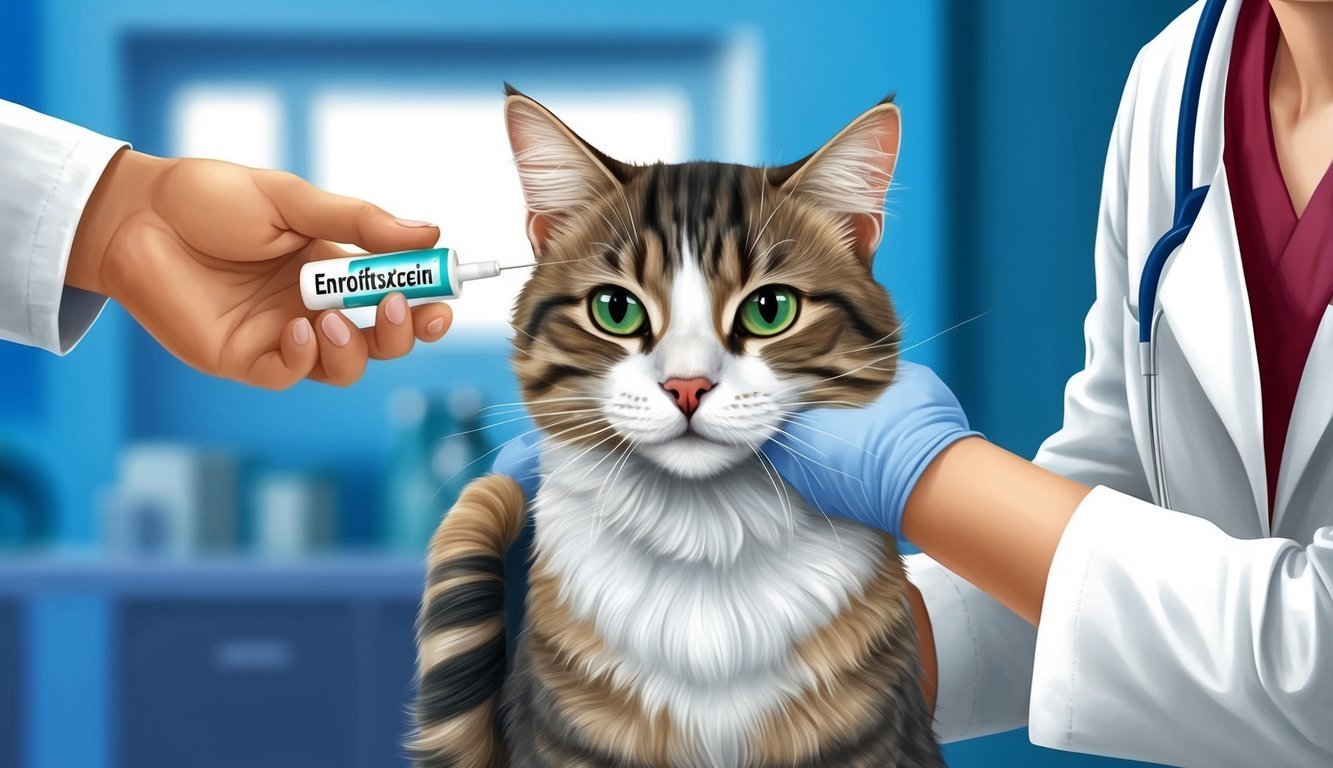Enrofloxacin, also known as Baytril, is a powerful antibiotic used to treat bacterial infections in cats.
It is effective against a variety of infections, including those affecting the respiratory, urinary tract, and skin.
Understanding when and how to use enrofloxacin can make a significant difference in your cat’s recovery process.
As a cat owner, it’s essential to know the specific benefits, proper dosages, and potential side effects associated with enrofloxacin.
This medication can be a game-changer in managing your cat’s health, but it is crucial to do so under veterinary supervision to avoid complications.
Preparing yourself with accurate information will help ensure that you respond effectively to your cat’s needs.
Whether your cat is facing a common infection or a more complex bacterial issue, enrofloxacin might be a recommended treatment.
Getting familiar with how this antibiotic works and its implications for your pet’s health can enhance your confidence in managing their veterinary care.
Key Takeaways
- Enrofloxacin is effective against various bacterial infections in cats.
- Proper dosage and administration are crucial for safe use.
- Be aware of potential side effects and consult your vet for questions.
What Is Enrofloxacin?
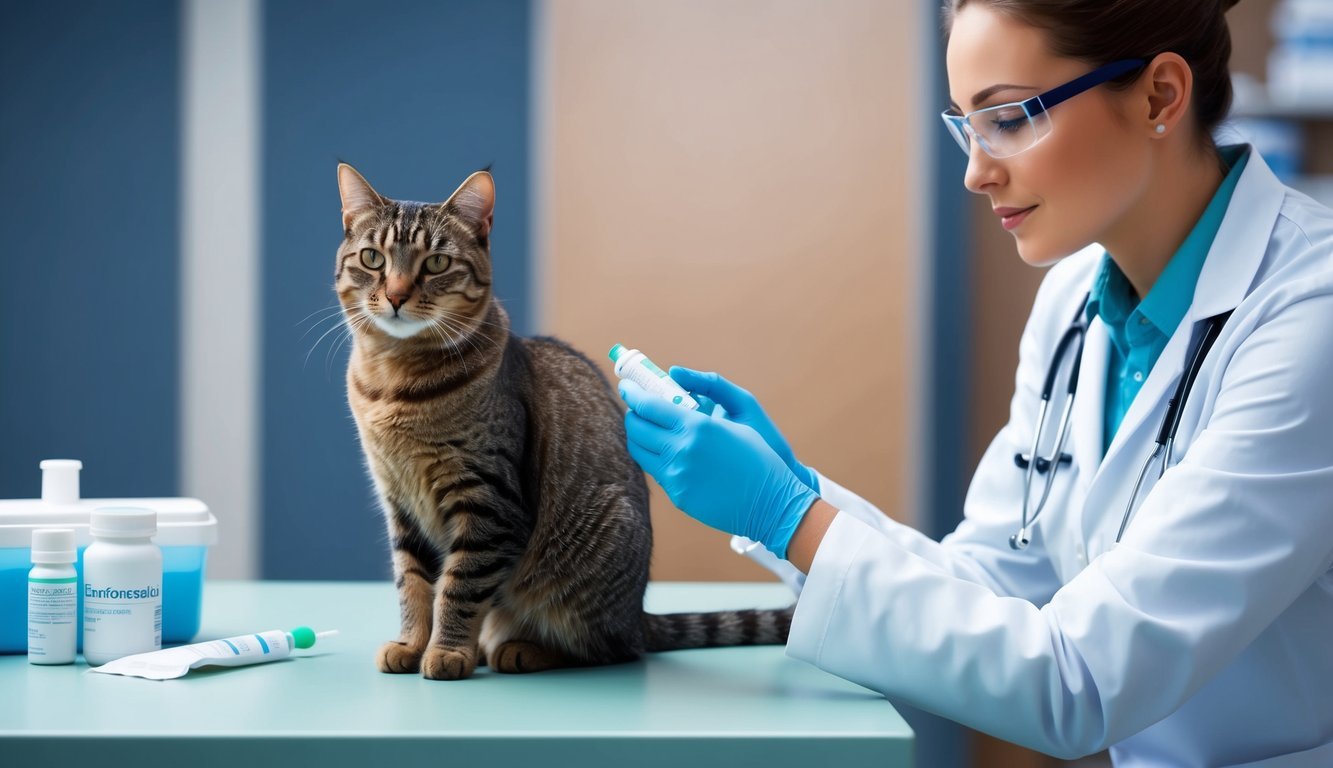
Enrofloxacin is an important antibiotic used in veterinary medicine, particularly for treating infections in cats.
This section breaks down its definition and classification, as well as its role as a broad-spectrum antibiotic.
Definition and Classification
Enrofloxacin belongs to a class of antibiotics known as fluoroquinolones.
These medications are designed to target bacterial infections effectively.
Specifically for cats, Enrofloxacin is marketed under the brand name Baytril.
When your veterinarian prescribes Enrofloxacin, they usually aim to manage a range of bacterial infections.
It works by disrupting the process that bacteria use to replicate and repair their DNA.
This action effectively kills or inhibits the growth of harmful bacteria in your cat’s body.
Enrofloxacin as a Broad-Spectrum Antibiotic
As a broad-spectrum antibiotic, Enrofloxacin is effective against a wide variety of bacteria.
This includes organisms responsible for respiratory, urinary tract, and skin infections.
By covering multiple types of bacteria, it provides a versatile treatment option for various ailments.
Your cat’s specific dosage will depend on several factors, such as weight and the nature of the infection.
Typically, the dosage is about 5 mg per kg of body weight.
For the best results, it’s essential to follow your vet’s instructions closely.
Enrofloxacin’s proven efficacy makes it a go-to antibiotic in veterinary medicine, ensuring your cat can recover from infections effectively.
Benefits and Uses
Enrofloxacin is a powerful antibiotic widely used in veterinary medicine for treating various infections in cats.
Its effectiveness in managing bacterial infections makes it a go-to option for many veterinarians.
Here are some key uses of enrofloxacin for your feline friend.
Bacterial Infections and Treatment
Bacterial infections can be a serious concern for your cat’s health.
Enrofloxacin is a broad-spectrum antibiotic, meaning it targets a wide range of bacteria.
This makes it valuable when the exact bacteria causing the infection is unknown.
Your veterinarian may prescribe enrofloxacin for conditions such as skin infections, abscesses, and post-surgical infections.
The standard dosage is typically around 5 mg per kg of body weight, administered once daily.
Always ensure that you follow your vet’s dosage recommendations, as improper use can lead to resistance.
Respiratory and Skin Infections
Respiratory infections in cats can lead to serious complications if not treated promptly.
Enrofloxacin is effective against various bacteria that can affect a cat’s respiratory system.
This includes conditions like bronchitis and pneumonia, often presenting with symptoms like coughing or difficulty breathing.
For skin infections, enrofloxacin can also be beneficial.
It helps combat infections that occur through cuts or bites, promoting faster healing.
If your cat shows signs of skin irritation or persistent licking, consult your vet about potential use of this antibiotic.
Urinary Tract Infections
Urinary tract infections (UTIs) are common in cats and can lead to severe discomfort.
Enrofloxacin is effective in treating UTIs caused by susceptible bacteria.
Symptoms to watch for include frequent urination, straining, and blood in the urine.
Veterinarians often opt for enrofloxacin when other antibiotics are ineffective.
It’s crucial to complete the entire course of treatment, even if your cat appears to improve before finishing the medication.
This helps prevent recurrence and ensures the infection is completely cleared.
Dosage and Administration
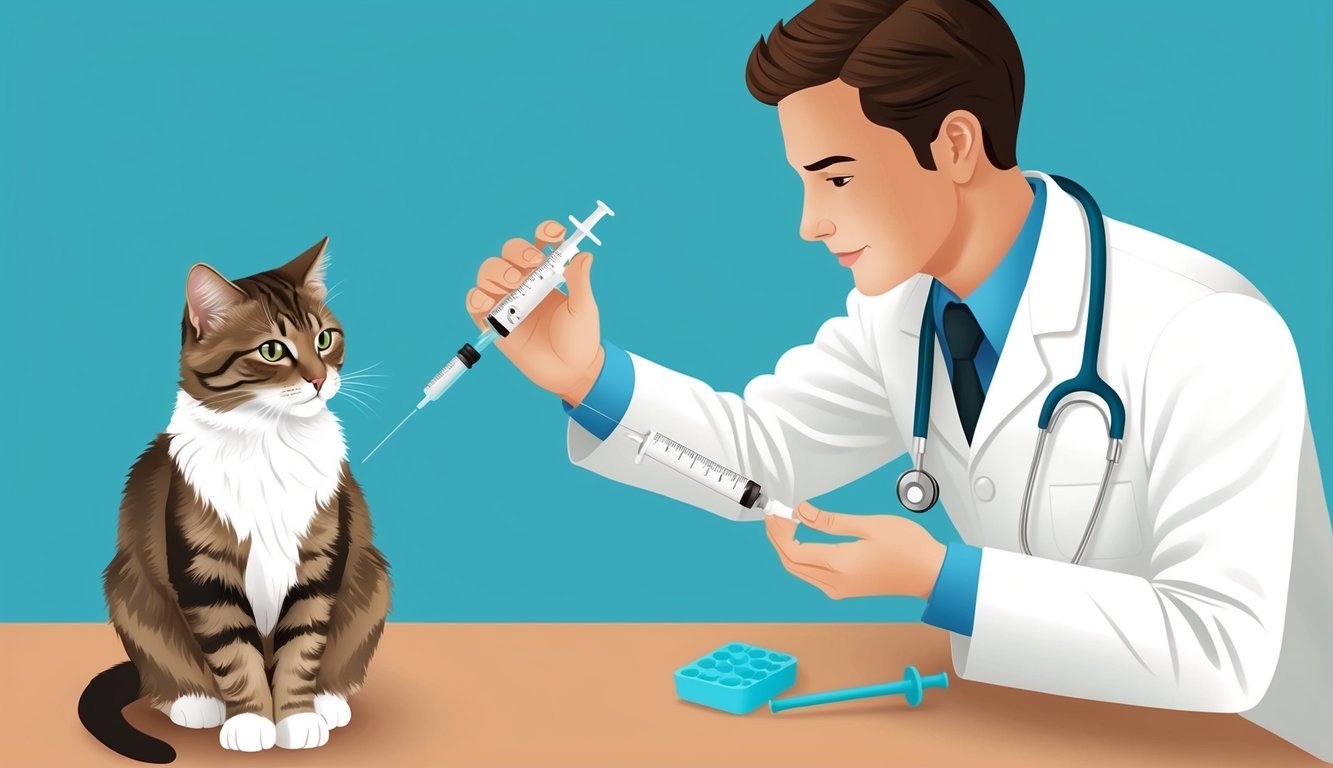
When using enrofloxacin for cats, getting the dosage right is crucial for effective treatment while minimizing potential side effects.
Understanding how to calculate the correct dosage and the methods of administration will ensure your cat receives the best care.
Calculating the Correct Dosage
The basic dosage recommendation for enrofloxacin, commonly known as Baytril, varies depending on the specific condition your cat is facing.
Generally, the typical dose is:
- 5 mg per kg of body weight per day
- Administered as a single daily dose or divided into two doses given every twelve hours.
Your veterinarian may suggest adjustments based on factors like your cat’s age, size, and the severity of the infection.
For chronic or severe cases, the treatment duration may extend up to 10 days.
Always follow your vet’s directions closely and never alter the dosage without consulting them first.
Methods of Administration
Enrofloxacin is available in various forms, including oral suspension and injectable solutions.
-
Oral Suspension: This form can be mixed with food to make administration easier. Ensure your cat consumes the entire dose to ensure effectiveness.
-
Injectable Form: This is typically administered by a veterinarian. If your vet provides you with injectable Baytril for home use, they will demonstrate the proper technique to ensure safety and efficacy.
Regardless of the method, consistency is key.
Keeping to the scheduled times helps maintain the appropriate drug levels in your cat’s system, leading to better outcomes in treatment.
Always monitor your cat for any side effects during the treatment period.
Side Effects of Enrofloxacin
When considering enrofloxacin for your cat, it’s essential to understand its potential side effects.
While this antibiotic is effective against bacterial infections, it may cause various reactions ranging from mild to severe.
Common Adverse Reactions
Common side effects of enrofloxacin include:
- Vomiting: This is one of the most frequent reactions and can occur shortly after administration.
- Loss of Appetite: Your cat may show less interest in food, leading to weight loss if it persists.
- Diarrhea: Some cats experience gastrointestinal upset, resulting in loose stools.
- Lethargy: Reduced energy levels can be noticeable, as your cat may seem more tired than usual.
While these reactions can be concerning, they often resolve as your cat adjusts to the medication.
Keep an eye on their behavior and consult your vet if these side effects continue.
Identifying Serious Side Effects
Serious side effects, while rarer, require immediate attention.
Look out for:
- Seizures: If your cat experiences a seizure, contact your veterinarian right away.
- Blindness: Prolonged use, especially at higher doses, can lead to retinal degeneration.
- Elevated Liver Enzymes: This is a risk, especially in cats with pre-existing liver conditions. Symptoms might include vomiting and abdominal pain.
- Depression: A marked change in behavior, such as withdrawal or hiding, can indicate distress or side effects.
Monitoring your cat closely during treatment is crucial.
Reporting any abnormal behaviors or symptoms to your vet promptly can help manage any serious side effects effectively.
Safety and Precautions
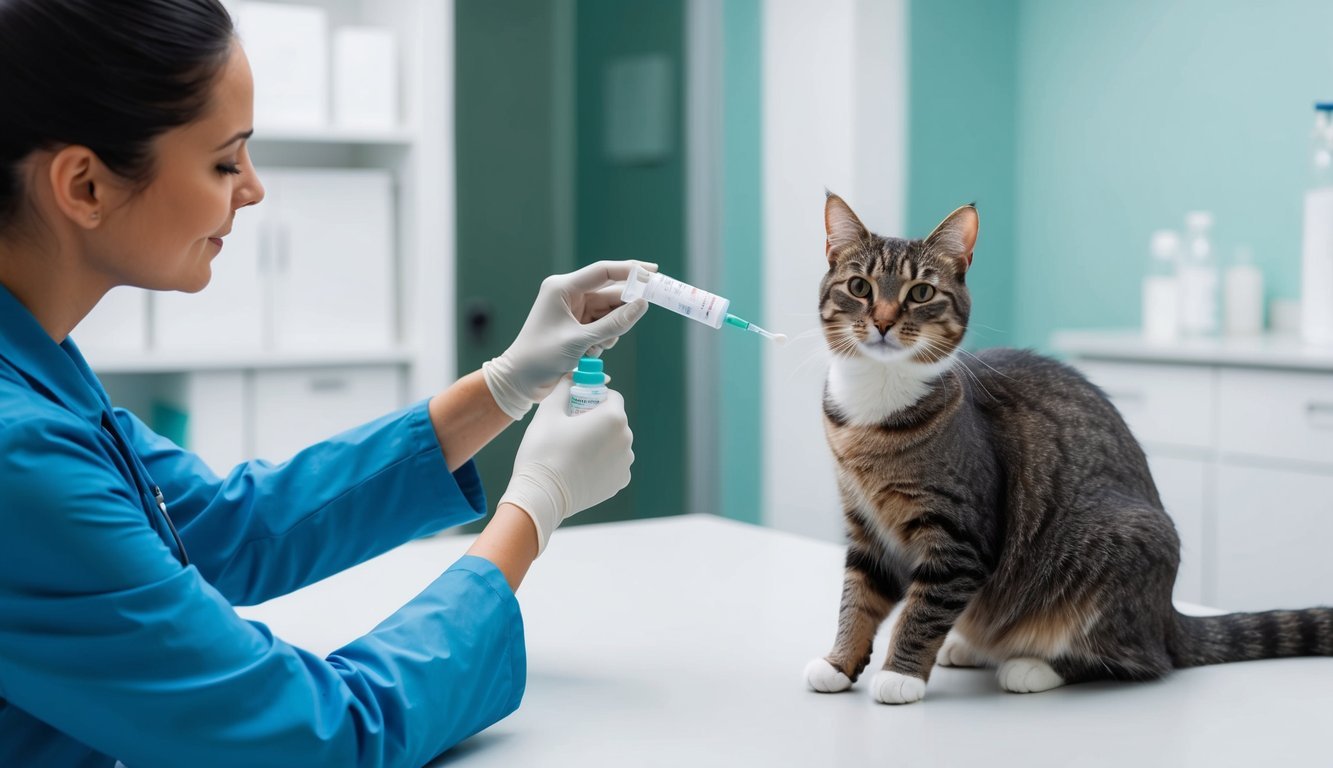
When considering enrofloxacin for your cat, it’s essential to understand safety measures and specific precautions.
This medication can effectively treat infections but also carries certain risks that require attention.
Contraindications
Before administering enrofloxacin, check for contraindications.
This antibiotic should not be given to pregnant cats or growing kittens due to potential adverse effects on development.
In some cases, enrofloxacin has been linked to blindness in cats, particularly in prolonged use or high doses.
If your cat is on medications like theophylline or cyclosporine, inform your vet.
Drug interactions may lead to increased side effects or decreased effectiveness.
Always consult your veterinarian if your cat has a history of aggression or behavioral issues, as enrofloxacin can sometimes exacerbate these conditions.
Special Considerations for Cats
It’s crucial to consider your cat’s health history when using enrofloxacin.
If you have a senior cat or one with pre-existing health conditions, discuss these with your vet for tailored advice.
For kittens or growing animals, the dosage needs to be carefully adjusted to avoid potential growth issues.
Regular monitoring during treatment is essential.
Watch for side effects such as gastrointestinal upset or changes in behavior.
Make sure to report any unusual symptoms to your vet immediately.
Following these precautions allows for safe use while effectively managing your cat’s health.
Drug Interactions and Contraindications
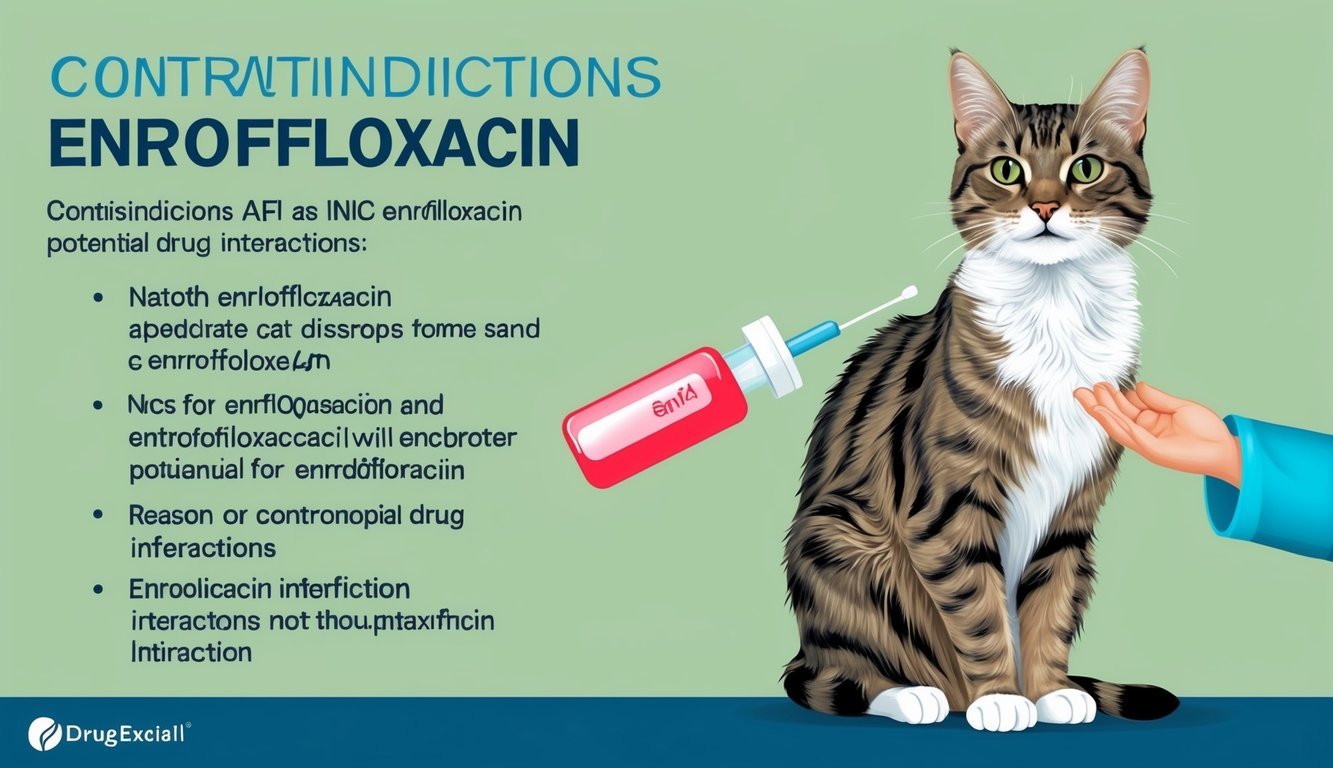
When considering enrofloxacin for your cat, it’s crucial to be aware of potential drug interactions and contraindications.
Certain medications can affect how enrofloxacin works, and some health conditions may make its use unsafe.
Theophylline and Cyclosporine
Theophylline is a medication used in respiratory conditions.
When administered alongside enrofloxacin, it may increase blood levels of theophylline, leading to side effects.
If your cat takes theophylline, your veterinarian may need to adjust the dosage to prevent toxicity.
Cyclosporine, which is often prescribed for immune-mediated conditions, can also interact with enrofloxacin.
Combining these drugs may lead to decreased effectiveness of cyclosporine.
It’s essential to inform your vet about any current medications your cat is taking to ensure safe and effective treatment.
Antacids, Vitamins, and Supplements
Antacids containing aluminum, magnesium, or calcium may hinder the absorption of enrofloxacin when given together.
This reduced absorption can decrease the drug’s effectiveness in treating infections.
It’s recommended to time the administration of antacids a few hours apart from enrofloxacin.
Certain vitamins and supplements can also pose issues. Supplements containing iron or other minerals may interfere with enrofloxacin’s absorption as well.
Always consult your veterinarian before introducing any new medications or supplements to your cat’s routine so that they can provide guidance on proper timing and dosage.
Managing Overdose and Emergencies

When using enrofloxacin for your cat, be aware of the signs of an overdose.
If your cat receives too much of this antibiotic, it can lead to serious health issues.
Signs of Overdose:
- Vomiting
- Diarrhea
- Seizures
- Dilated pupils or blindness
If you notice any of these symptoms, act quickly.
What to Do:
- Contact Your Veterinarian: Inform them about the situation immediately.
- Call Animal Poison Control: They can provide guidance specific to the situation.
Prevention Tips:
- Always follow the prescribed dosage.
- Measure doses carefully.
- Keep medications out of reach.
Complications can arise if overdoses occur, including severe side effects like organ damage.
Enrofloxacin can also lead to issues affecting the nervous system.
In emergencies, never wait to see if symptoms improve.
Quick action can make a significant difference in the outcome.
Prompt veterinary attention is essential to ensure your cat’s safety and well-being.
Understanding Resistance

When using enrofloxacin for your cat, it’s essential to be aware of antimicrobial resistance.
This occurs when bacteria, like Escherichia coli and Staphylococcus aureus, develop the ability to withstand treatments that once effectively eliminated them.
Common types of bacteria resistant to enrofloxacin include:
- Escherichia coli: Often associated with urinary tract infections.
- Staphylococcus aureus: Known for skin infections and can be quite challenging to treat.
- Pasteurella multocida: Commonly linked to bites and scratches, especially from other animals.
Resistance can arise from various factors, such as:
- Inappropriate use of antibiotics: Overuse or incorrect dosages can lead to ineffective treatments.
- Incomplete treatment courses: Stopping medication early may not eliminate all bacteria, allowing resistant strains to thrive.
- Inadequate diagnostics: Without proper testing, you may not have the right antibiotic for the infection.
Antimicrobial stewardship is vital.
This means making informed choices about when and how to use antibiotics.
By doing this, you help reduce the risk of resistance and ensure better outcomes for your cat.
Always discuss with your veterinarian if you have concerns about antibiotic resistance and your cat’s treatment plans.
They can guide you on the best practices to safeguard your pet’s health.
Off-Label Use and Extra-Label Considerations
When considering enrofloxacin for your cat, it’s essential to understand off-label use and the regulatory landscape.
This includes common applications beyond official FDA approvals and important aspects of its use in veterinary medicine.
Common Extra-Label Uses
Enrofloxacin is often prescribed off-label for various conditions in cats, particularly when other treatments fail.
Some common extra-label uses include:
-
Ear Infections: Enrofloxacin is effective against certain bacterial infections in the ear. It can be a vital option when standard treatments do not work.
-
Respiratory Infections: Veterinary professionals may use it for severe respiratory infections that haven’t responded to other medications.
-
Eye Conditions: It may also be used in cases of conjunctivitis caused by bacteria. However, caution is advised due to potential side effects on the eyes.
Remember, using a medication off-label means it’s not specifically approved for that use, so close monitoring by your veterinarian is critical to ensure your cat’s safety.
FDA Approval and Regulatory Aspects
While enrofloxacin is FDA-approved for certain animals, its use in cats often falls outside these guidelines.
The FDA regulates extra-label drug use under specific conditions:
-
Veterinarian-Client-Patient Relationship (VCPR): A valid VCPR is required for off-label use, ensuring the vet knows your cat’s health needs.
-
Health Threats: Extra-label use is permitted only if your pet’s health is at risk or the condition is severe.
-
Informed Decisions: You should be fully informed of potential risks, including side effects like eye damage, which can occur due to improper dosing.
Understanding these considerations helps you make informed choices about your cat’s health and treatment options.
Role of Enrofloxacin in Veterinary Medicine
Enrofloxacin is a broad-spectrum antibiotic commonly used in veterinary medicine.
It’s particularly effective against a variety of bacterial infections in animals, including cats.
This antibiotic belongs to the fluoroquinolone family and works by inhibiting bacterial DNA synthesis.
It’s known for its potency against both Gram-negative and Gram-positive bacteria, making it a versatile treatment option.
For cats, enrofloxacin is often selected for its effective treatment of infections, especially when other antibiotics may be ineffective.
It’s useful for addressing conditions like:
- Bacterial bronchitis
- Urinary tract infections
- Skin infections
It’s important to be cautious when using enrofloxacin in cats due to potential adverse effects. Retinal degeneration is a significant risk, especially at higher doses (5 mg/kg or more).
This side effect can lead to vision problems, so regular monitoring by a veterinarian is crucial.
Additionally, enrofloxacin is not recommended for young or growing animals.
The risk of adverse effects on cartilage is a concern.
Knowing when and how to use enrofloxacin responsibly can make a difference in your pet’s health.
Always consult your veterinarian about the best treatment options for your feline friend.
Practical Tips for Cat Owners
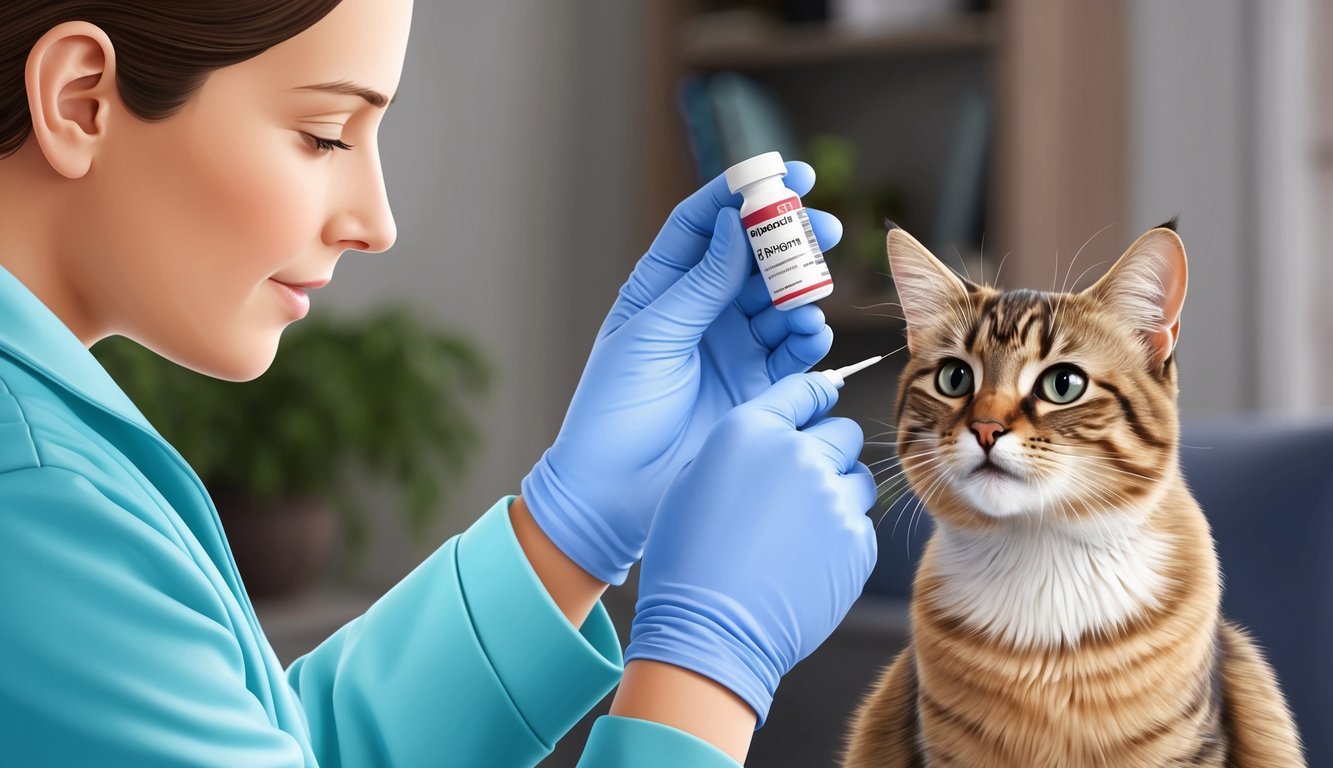
When your cat is prescribed enrofloxacin, specific practices can help ensure effective treatment.
Administering the medication correctly and monitoring your cat’s health will be crucial during this process.
Administering Medication
To ensure your cat receives the full benefit of enrofloxacin, consider the best way to give the medication. Tablets can be given directly or mixed with food.
If you choose to hide it in their meal, ensure your cat consumes the entire portion.
Use a pill pocket or a small amount of tuna to entice your cat if they are resistant. Dosage should be strictly followed, typically around 5 mg per kg of body weight, split into two doses if advised by your vet.
Always keep fresh water available.
Hydration supports your cat’s recovery and helps prevent potential side effects from the antibiotic.
If your cat seems nervous about the medication, try to create a calm environment during administration.
Monitoring Your Cat’s Health
After starting enrofloxacin, keep a close eye on your cat’s condition.
Check for any signs of adverse reactions, like unusual laziness, changes in appetite, or gastrointestinal upset.
If your cat develops abscesses or wounds that don’t seem to improve, contact your vet.
They may need further treatment.
A sudden lack of appetite can be concerning.
If your cat refuses to eat for more than a day, consult your veterinarian for advice.
Regularly observe their behavior.
If they show signs of nervousness or unusually clingy behavior, it may indicate discomfort or stress, which should be addressed promptly.
Frequently Asked Questions
You may have some questions about enrofloxacin and how it works for your cat.
Let’s address common concerns, including its dosing, potential side effects, and effectiveness against specific infections.
What are the possible side effects when my cat is treated with enrofloxacin?
Side effects of enrofloxacin can include vomiting, diarrhea, and changes in appetite.
Some cats may experience lethargy or develop a sensitive reaction to the medication.
Most side effects are mild, but it’s important to monitor your cat and consult your vet if concerns arise.
How should enrofloxacin be dosed for my cat?
Dosing of enrofloxacin generally depends on your cat’s weight and the specific infection being treated.
A common guideline is 5 mg per kilogram of body weight, administered once daily.
In some cases, your vet may prescribe a divided dose, especially for more severe conditions.
Can enrofloxacin cause vomiting in cats?
Yes, vomiting can be a side effect of enrofloxacin.
If your cat vomits after taking the medication, it’s advisable to consult your veterinarian.
They may adjust the dosage or suggest taking the medicine with food to minimize this reaction.
How long does it typically take for enrofloxacin to show effects in cats?
You might notice improvement within a few days of starting enrofloxacin treatment.
However, the duration can vary based on the type and severity of the infection.
Always follow your veterinarian’s guidance regarding treatment length and any follow-up evaluations.
What types of infections does enrofloxacin treat in cats?
Enrofloxacin is effective against various bacterial infections, including respiratory, urinary tract, and skin infections.
It targets specific bacteria and helps your cat recover from these types of ailments.
Your vet will determine the suitability based on the diagnosed condition.
Is enrofloxacin considered a potent antibiotic for feline use?
Yes, enrofloxacin is regarded as a potent antibiotic in veterinary medicine.
It is part of the fluoroquinolone class of antibiotics, which are known for their effectiveness against a wide range of bacteria.
Your vet can provide guidance on its use and effectiveness for your cat’s specific needs.


